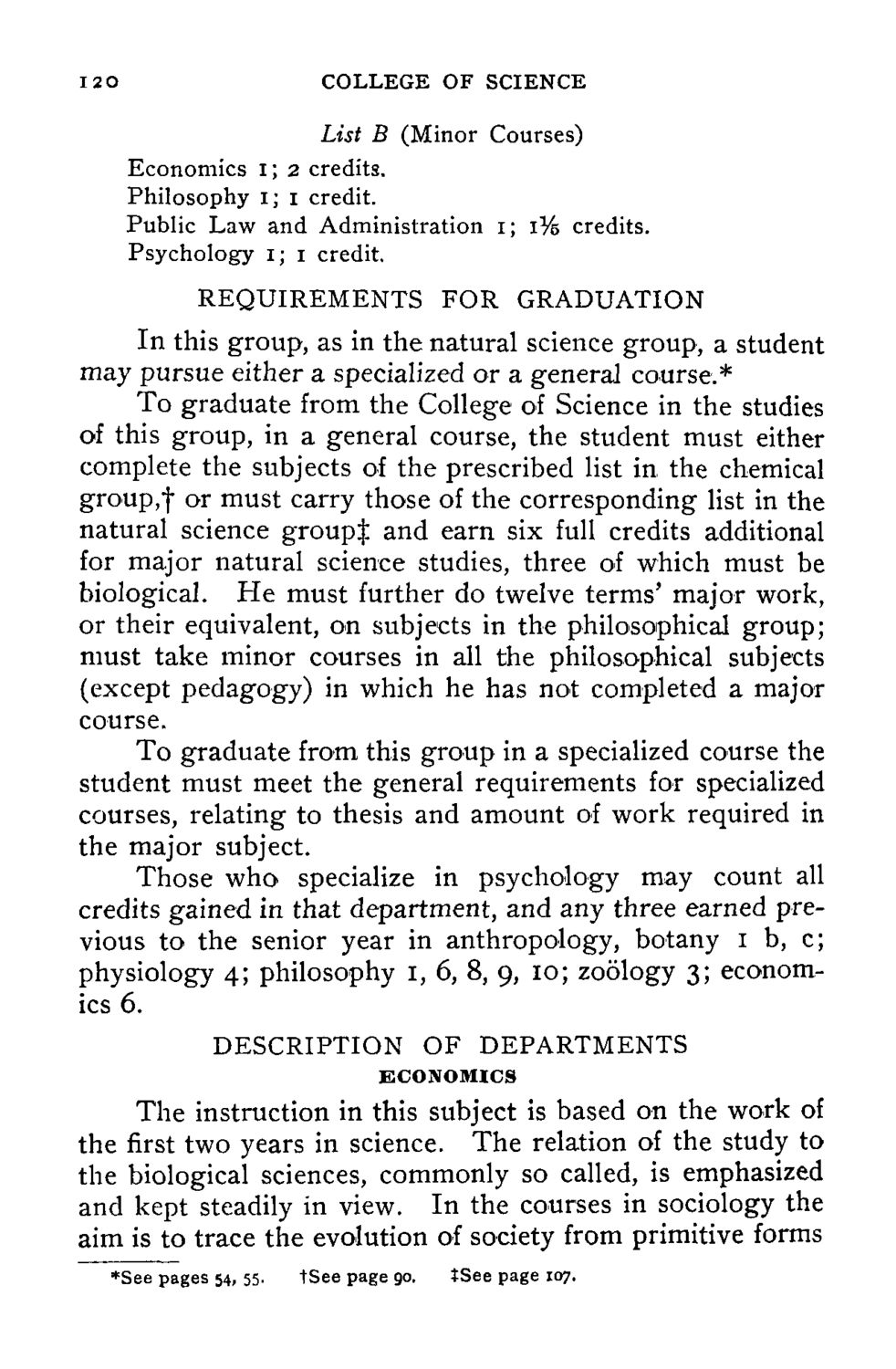| |
| |
Caption: Course Catalog - 1897-1898
This is a reduced-resolution page image for fast online browsing.

EXTRACTED TEXT FROM PAGE:
I2O COLLEGE OF SCIENCE List B (Minor Courses) Economics I; 2 credits. Philosophy 1; 1 credit. Public Law and Administration 1; 1% credits. Psychology 1; 1 credit. REQUIREMENTS FOR GRADUATION In this group, as in the natural science group, a student may pursue either a specialized or a general course.* To graduate from the College of Science in the studies of this group, in a general course, the student must either complete the subjects of the prescribed list in the chemical group,f or must carry those of the corresponding list in the natural science groups and earn six full credits additional for major natural science studies, three of which must be biological. He must further do twelve terms' major work, or their equivalent, on subjects in the philosophical group; must take minor courses in all the philosophical subjects (except pedagogy) in which he has not completed a major course. To graduate from this group in a specialized course the student must meet the general requirements for specialized courses, relating to thesis and amount of work required in the major subject. Those who specialize in psychology may count all credits gained in that department, and any three earned previous to the senior year in anthropology, botany 1 b, c; physiology 4; philosophy 1, 6, 8, 9, 10; zoology 3; economics 6. DESCRIPTION OF DEPARTMENTS ECONOMICS The instruction in this subject is based on the work of the first two years in science. The relation of the study to the biological sciences, commonly so called, is emphasized and kept steadily in view. In the courses in sociology the aim is to trace the evolution of society from primitive forms *See pages 54, 55. tSee page 90. tSee page 107.
| |